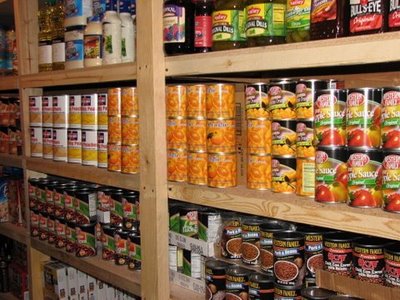 By Douglas R. BrownAtlantic Publishing
By Douglas R. BrownAtlantic Publishing
Part 3: Purchasing Ideas
There are many ways to curb cost. Here are a few ideas:
- Inexpensive fish. Turn your customers on to seafood alternatives and lower your food cost. Consider using some alternatives such as Tilapia, farm-raised salmon, fresh-water perch, Alaskan halibut, mahi-mahi, shark or skate. Skate, for example, can be purchased wholesale right now online for $1.62 per pound. The secret, of course, is to make certain it is fresh.
- Shelled eggs. Consider buying shelled eggs if your restaurant uses more than three cases of eggs per week. This will reduce the amount of cardboard and other packaging that must be disposed or recycled. Shelled eggs are often packaged in 5-gallon buckets that can later be reused for cleaning or maintenance.
- Condiments. Use refillable condiment dispensers instead of individual condiment packets for dine-in customers.
- Cost-Watch Web site. This site, www.cost-watch.com, helps restaurant management control labor, utility and food and beverage costs. It also offers regional reports to compare expenses and food costs in similar restaurants as well as price trend forecasts. It is a great resource for purchasing managers.
- Join a barter club. Bartering allows you to buy what you need and pay for it with otherwise unsold products, such as food and beverages or even catering services. Almost anything and everything can be purchased with barter services. Nationally, over 250,000 businesses are involved in barter. Check out these Web pages:
www.barterwww.com
www.barterbrokers.com
www.netlabs.net/biz/itex/index.htm
- Similar ingredients. Include menu items that are essentially made with similar ingredients as others on the menu. For example, a shrimp cocktail and shrimp pasta are two very different meals, but the ingredients are similar. These ingredients are simple, inexpensive and don't take up a lot of storage space. Having five or six other pasta sauces to offer also loads up your menu with choices without excessively increasing your inventory. This will not only allow you to buy in bulk and keep costs down, but will also lighten the load on your kitchen staff.
- Bread baskets. The potential for waste in bread baskets is large. Most of these come back from the table partially eaten at best. You may want to consider giving bread baskets only if requested or you may want to cut down on the amount served. You should also consider including packaged items since these can be reused. Some operators are now serving bread only by request or they are serving one roll or breadstick at a time from a breadbasket with tongs.
- Substitute premade items. Substitute premade items for some items you have been making from scratch. You don't have to sacrifice quality to do this; many premade items are good. You can also start with a premade item and add ingredients. For instance, you can buy a premade salad dressing and add blue cheese or fresh herbs. Using these items will lower your food and labor costs, and you can still put out a quality item.
Topics:
inventory managers,
Hotel Inventory,
Restaurant Inventory,
food inventory,
inventory schedule,
inventory counting,
purchasing,
inventory control,
Food control
By Douglas R. BrownAtlantic Publishing
Part 2: Perpetual Inventory
The perpetual inventory is a check on the daily usage of your main entree items from the freezers and walk-ins. This is for tracking expensive items, such as meat, seafood, chicken, cans of caviar, etc. When completed, the perpetual inventory will ensure that no bulk products have been pilfered from the freezer or walk- ins. Computer software programs and some POS systems will track this information for you. The following is an example of a Perpetual Order Form:

- List all the food items that are listed on the Sign-out Sheet and Yield Form. In the "Size" column, list the unit size in which the item is packaged. The contents of most cases of food are packed in units such as 5-pound boxes or 2-pound bags. Meat is usually packed by the number of pieces in a case and the case's weight. The size listed on the perpetual inventory must correspond to the size the preparation cooks are signing out of the freezer and walk-ins.
- In the "Item" column, enter the number of each item listed. For example, if shrimp is packed in 5-pound boxes and you have two 50-pound cases, there are 20 boxes. Enter 20 in the "Item" column. Each number along the top corresponds to each day of the month. At the end of each day, count all the items on hand and enter this figure on the "=" line. Compare this figure to the "Amount Ordered or Defrosted" column on the Preparation Sheet; these amounts must be the same as the total number of each item on the "-" line. If there were any deliveries, place this total on the "+" line.
- Theft. Theft can occur when someone removes a box of shrimp from the case, for example. The person then reseals the case with the other boxes to hide the gap.
- Check the invoices every day for the items delivered that are in your perpetual inventory. Ensure that all items signed off as being delivered are actually in the storage areas. Should there be a discrepancy, check with the employee that signed the invoice. The number of items you start with (20) plus the number you received in deliveries (5), minus the amount signed out by the preparation cooks (1), must equal the number on hand (24). If there is a discrepancy, you may have a thief.
- What to do if you suspect theft. Should you suspect a theft in the restaurant, record the names of all employees who worked that particular day. If thefts continue to occur, a pattern may develop among the employees who were working on all the days in question. Compute the perpetual inventory or other controls you are having a problem with at different times of the day and before and after each shift. This will pinpoint the area and shift in which the theft is occurring. Sometimes, placing a notice to all employees that you are aware of a theft problem in the restaurant will resolve the problem. Make it clear that any employee caught stealing will be terminated.
Purchasing Kickbacks and Gifts
Unfortunately, the food service industry is notorious for kickbacks. It is even more unfortunate that these kickbacks or gifts are essentially paid for by you in the form of higher prices. Here are some ideas to help keep kickbacks out of your store:
- Purchasing and receiving must be done by different employees. The person ordering should not be the same person receiving and checking the items.
- Kickback policy. Develop a general policy and list it in your employee handbook that employees cannot receive anything for free from a vendor or potential vendor.
- Change positions. People become complacent over time; move positions around.
- Check on prices of expensive items like meat and seafood yourself.
Topics:
inventory managers,
Food Costs,
food inventory,
inventory counting,
controling costs,
inventory control,
Food control
By Douglas R. BrownAtlantic Publishing
Part 1: Inventory, Storage and Accounts Payable
Ordering effectively is impossible unless you are completely familiar with the inventory items. Prior to orders being placed with vendors, counts of stock need to be established. Software programs are able to determine order quantities based upon par balances and sale figures; we highly recommend this implementation. Whether your ordering system is performed with a pencil and paper or by computer, its purpose is to:
- Provide reports of what is needed.
- Provide reports the specified products.
- Provide reports of vendors and contact information.
- Provide reports of prices.
- Provide a historical report of prices.
- Provide a method for the ease of order placement.
Keeps these critical points about inventory in mind:
- Inventory amounts. The more you have in inventory, the harder it is to control.
- Shelf life for perishables. Meat, produce and seafood will only last 2-3 days, so do not order too much of these products at a time.
- Excessive inventory. It ties up your cash, hindering cash flow.
- Extra food. Having extra food on hand tends to lead to over-portioning and is easier for theft.
- Inventory turnover. Ideally, the entire food inventory should be turned every 5-8 days.
- Vendors. Schedule vendor representatives visits so you are not interrupted.
- Standing orders. Consider placing standing orders for regularly used items.
- Consider using one "main vendor." If you receive most of your product from one vendor, you will spend much less time on purchasing, there will be fewer salespeople to deal with, there will be fewer deliveries each week and labor costs will be saved. You also will receive better service. As previously mentioned, most large vendors today have online ordering systems.
- Check trade magazines and www.foodbuy.com for rebates available from manufacturers.
- Join a buying group such as the one at www.foodservice.com. They have pre-negotiated manufacturer allowances available on over 10,000 food and food-related products from over 125 network suppliers from manufacturers like Sweetheart, Ecolab, Sara Lee and General Mills.
- Warehouse buying clubs. Check out warehouse buying clubs such as Sam's Club, samsclub.com, Costco, costco.com and Restaurant Depot, www. restaurantdepot. com.
- Cash discounts. Many purveyors provide cash discounts if payment is made early, such as "2/10, net 30." With this, a 2-percent discount may be taken if payment is made within 10 days. Cash discounts are worth taking; a restaurant that purchases $500,000 per year and takes a 2-percent discount will save $10,000.
- Alternatives. Don't automatically use fresh fruit and vegetables if canned alternatives can be used without cutting back on meal quality. Canned tomatoes, artichoke hearts, chili peppers, pears, etc., can all be used in many meals without a big loss in flavor, and the trade off is a big drop in price and spoilage rates.
Topics:
food inventory,
Food Storage,
Food control
 By Douglas R. BrownAtlantic Publishing
By Douglas R. BrownAtlantic Publishing




